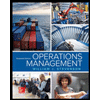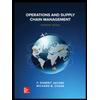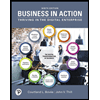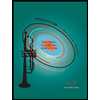Thomas Kratzer is the purchasing manager for the headquarters of a large insurance company chain with a central inventory operation. Thomas’s fastest-moving inventory item has a demand of 6,000 units a year. The purchasing cost of each unit is $16 (additional 5% discount applies if at lease 150 units ordered a time), and the inventory carrying cost is $3 per unit per year. The average ordering cost is $10 per order. It takes about 3 working days for an order to arrive. (This is a corporate operation, and there are 300 working days per year.) Answer the following questions, Q1~Q5. Note that you must include Excel formulas/calculations showing how you arrive at the answer. Q1: Assume that the demand is consistent throughout the year. What is the ROP? Note that stockouts and unnecessary inventory holding should be avoided at any times. Q2: Assume that the demand is consistent throughout the year. Based on the EOQ model, to minimize the costs of purchasing, ordering and inventory holding for the year, how many units should be ordered each time an order is placed? Q3: Following Q2, what is the total cost of purchasing, ordering and inventory holding expecetd for the year? Q4: The management recently obtained the real data (see below) of the demands during each reorder period (a reorder period = 3 working days). The management considers the above demands closely follow a normal distribution. To achieve a minumum 90% service level, a minimum new ROP (which should be whole number) should be used instead of the ROP used in Q1. This new ROP is expected to be higher than the ROP from Q1. What is the expected inventory holding cost to be added to the total inventory cost if the above new ROP is used in place of the ROP from Q1?
Thomas Kratzer is the purchasing manager for the headquarters of a large insurance company chain with a central inventory operation. Thomas’s fastest-moving inventory item has a demand of 6,000 units a year. The purchasing cost of each unit is $16 (additional 5% discount applies if at lease 150 units ordered a time), and the inventory carrying cost is $3 per unit per year. The average ordering cost is $10 per order. It takes about 3 working days for an order to arrive. (This is a corporate operation, and there are 300 working days per year.) Answer the following questions, Q1~Q5. Note that you must include Excel formulas/calculations showing how you arrive at the answer.
Q1: Assume that the demand is consistent throughout the year. What is the ROP? Note that stockouts and unnecessary inventory holding should be avoided at any times.
Q2: Assume that the demand is consistent throughout the year. Based on the EOQ model, to minimize the costs of purchasing, ordering and inventory holding for the year, how many units should be ordered each time an order is placed?
Q3: Following Q2, what is the total cost of purchasing, ordering and inventory holding expecetd for the year?
Q4: The management recently obtained the real data (see below) of the demands during each reorder period (a reorder period = 3 working days). The management considers the above demands closely follow a
What is the expected inventory holding cost to be added to the total inventory cost if the above new ROP is used in place of the ROP from Q1?

Step by step
Solved in 2 steps









